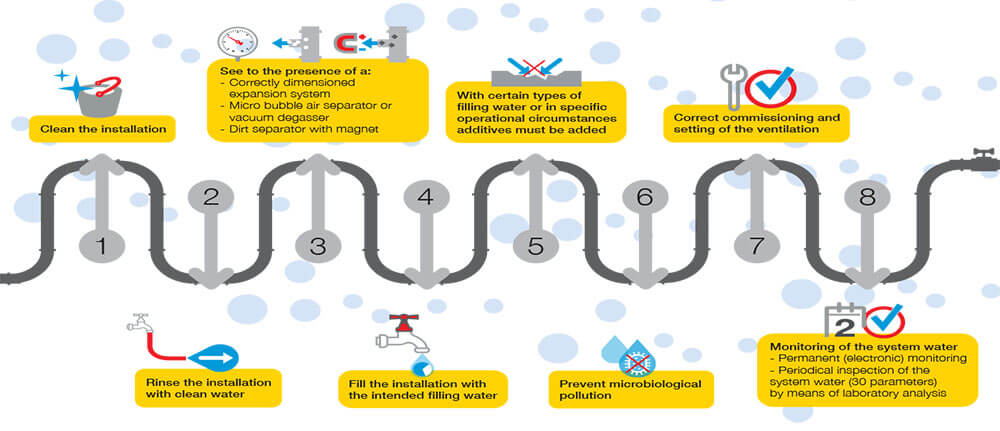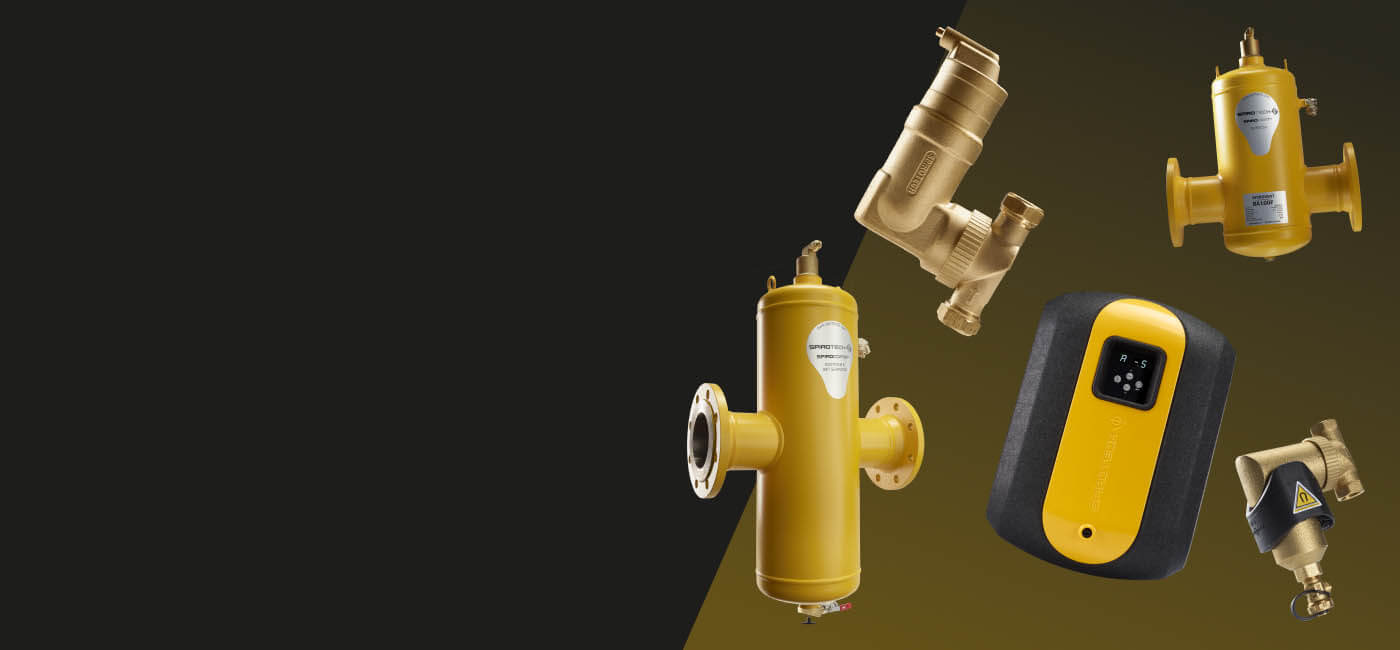In many cases it is hard to identify and resolve performance issues associated with an under-performing heating system. Many of these problems are related to the water in the system, which is THE most important component within the system.
As being the expert in system water quality we offer you tips and guidance on the causes of common problems, what to do to resolve them (or how to avoid an issue in the first instance), and which equipment should be installed to achieve optimal performance.
Water is, in fact, the most important component in the system. Get its conditioning right, and it will reward the system’s designer, installer, maintenance engineer, or end-user with efficient, trouble-free operation.
Common heating problems
Leaking automatic air vents (AAVs)
A build-up of dirt in the Automatic Air Vent will cause it to leak as the internal armature becomes clogged and is unable to function correctly, adversely affecting the float. Ensuring the system water is properly conditioned, and regular maintenance of the AAV, will alleviate this issue.
Balancing issues
A system with balancing issues will typically show this through radiators that are further away from the boiler being cold, due to uneven pressures. Merely turning up the thermostat or pump will lead to over-supply of the first rad, the boiler being over worked and inefficient and the pump working harder than necessary.
Pump inefficiency from magnetite
A build-up of black sludge can cause the pump to become too hot, as well as operate inefficiently, shortening its working lifetime as a result.
Corrosion / blockages
If not expelled, either through AAVs or vacuum degassing, air in the system will create oxidation, causing corrosion and leading to unwelcome dirt and magnetite, and scaling. As well as being destructive, it can cause obstructions in pipelines and eventually failure. This is more of an issue in areas with soft water, which has a lower pH level and is therefore more acidic.
Reducing heat transfer
An accumulation of air and dirt in radiators will reduce the radius of the heated surface, with cold spots in the affected areas.
Noise
Noisy radiators and pipework are a sign of air in the system, causing not only ‘banging and bubbling’ sounds but loss of heat transfer and inefficient energy consumption.
Cavitation / poor circulation
Air accumulation around the pump axle causes a lowered pump head. Air around the pump circle also causes bad cooling which seriously limits the lifetime of the pump.
Kettling
There are a number of reasons why the boiler might be ‘kettling’. There’s a leak in the pipework, the boiler is overheating, the pump isn’t working effectively, or there’s a proliferation of limescale around the heat exchanger that is restricting the flow of water. The latter is more likely in hard water areas.
Maintenance
All the previous points ultimately lead to extra costs through increased maintenance and a shortened lifetime of the installation.
8 steps to achieve better (system) water quality

It requires a mix of the right equipment, an understanding of the technology and its application, care in its installation, and a properly implemented maintenance regime.
Spirotech CPD course on Water Quality & Total Solutions
This detailed CPD course identifies common problems caused by poor water quality, from balancing issues and pump inefficiency to kettling and poor circulation. It contrasts these with Spirotech’s ‘8 steps to achieve better water quality’. Other topics covered include hydronic stability, the latest regulations and guidelines, how water conductivity causes corrosion, along with other factors such as the impact of hard and soft water. Bacterial contamination in closed heating and chilled water systems is also examined and explained.*
* CIBSE approval being sought
Register now for your free CPD
Please complete the form and a Spirotech representative will contact you.
CIBSE Accredited CPD Courses
We also have CIBSE Accredited CPD Courses you can attend:
- Deaeration and Dirt Separation Techniques
- Understanding Pressurisation design, installation and implementation

